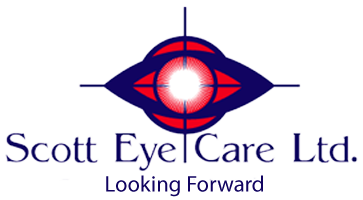
Contrast sensitivity allows you to tell the difference between the foreground and background. It's a crucial aspect of your visual function, particularly in low-light situations.
Common scenarios which require contract sensitivity include driving at night, in the rain or fog, or reading a newspaper, where the writing is printed on a gray background. The inability to distinguish objects clearly is not simply an inconvenience; it can lead to car accidents or falls that may cause injury.
Reduced visual contrast sensitivity is often a symptom of a more serious eye condition, such as cataracts, glaucoma or macular degeneration. This is why it's important—especially for those over 50—to undergo an annual eye exam. Your low vision eye doctor will measure how well you can tell the difference between light and dark by using a specific chart where the characters fade from black to gray gradually. If symptoms are present, your Low Vision of Fox Valley low vision eye doctor will provide you with treatment options, such as visual aids and devices to help you improve contrast sensitivity.
4 Signs of Visual Contrast Sensitivity Problems
The onset of this condition is often gradual and people may not notice a change in vision as it progresses. The following are common signs of reduced visual contrast sensitivity:
1. Reading Difficulties
People with reduced visual contrast sensitivity may be able to read normally if the letters are dark and the background is light, or vice-versa. However, if the letters and the background are of a similar color or level of brightness or faintness, people with reduced visual contrast sensitivity may struggle to read the text.
2. Problems Differentiating Between Objects
As with reading, poor visual contrast sensitivity doesn’t affect the ability to see objects, except when these objects are the same or similar colors as their surroundings. For instance, it may be difficult to locate black gloves in a black purse or see a white bird flying in a cloudy sky.
3. Tripping Over Curbs or Steps
People with contrast sensitivity difficulties may start realizing they have a problem if they keep tripping over curbs or steps because they don’t see them clearly. Steps and curbs are often the same shade as the surrounding surface and may not be visible to people with this vision problem.
4. Driving in Certain Conditions
People with reduced visual contrast sensitivity may struggle to drive in certain conditions:
- Low light
- Rain
- Glare
- Fog
Contrast sensitivity is essential for driving because it allows the driver to see road signs, pedestrians and road curves, and to distinguish between the road and the curb.
Tests for Visual Contrast Sensitivity
Even people with 20/20 vision can experience a noticeable decrease in their visual acuity if they are exposed to glare or if the letters on a chart are of a similar color to the background.
The Pelli Robson test was designed specifically to determine if a patient has difficulties with contrast sensitivity. The test is similar to the Snellen test because it features horizontal lines of letters. However, in this test, instead of shrinking in size with each descending row, the letters show less contrast, appearing in ever weaker shades of gray against a white background.
For instance, on the top row, the letters are black and the background is white. In subsequent rows, the letters are lighter gray until the contrast against the white background is very subtle on the bottom row.
If you have difficulty distinguishing between objects and their backgrounds or seeing road signs and steps, schedule an eye exam with Ronald Weingart, OD at Low Vision of Fox Valley today.
Q: What Causes Reduced Visual Contrast Sensitivity?
- A: Difficulties with visual contrast sensitivity tend to be a symptom of another ocular problem. Here are some common causes of the condition:
-
- Glaucoma
- Macular degeneration
- Severe dry eye syndrome
- Cataracts
- Diabetes
- Optic neuropathies
- Eye infections or trauma
Q: How Can Visual Contrast Sensitivity Be Improved?
- A: If the eye doctor identifies a problem with contrast sensitivity, the main form of treatment is to treat the underlying condition, which in most cases improves the contrast sensitivity as well. If the condition remains, the doctor can discuss treatment using specialized glasses that can enhance the quality and amount of light that enters the eye.
-
- Tinted lenses filter out glare, and the yellow tint can help the patient see contrasts more clearly, especially at night
- Anti-reflective coatings eliminate reflections from the surfaces of the eyeglasses and greatly reduce glare
- Photochromic lenses gradually become darker as the surroundings become lighter, and vice-versa, and act as both regular glasses and sunglasses when needed
- Polarized lenses reduce reflected glare, such as off water, snow and windshields.
Intraocular lenses, which replace the eye’s natural lens during cataract surgery, can enhance contrast sensitivity and reduce some of the vision problems caused by cataracts.
Our practice serves patients from Oswego, Naperville, Aurora, and Chicago, Illinois and surrounding communities.
References
- https://www.aarp.org/.../info-2021/visual-contrast-sensitivity.html
- https://www.visioncenter.org/refractive-errors/contrast-sensitivity/

*Saturday hours bi-monthly, please check with office to confirm we are open.